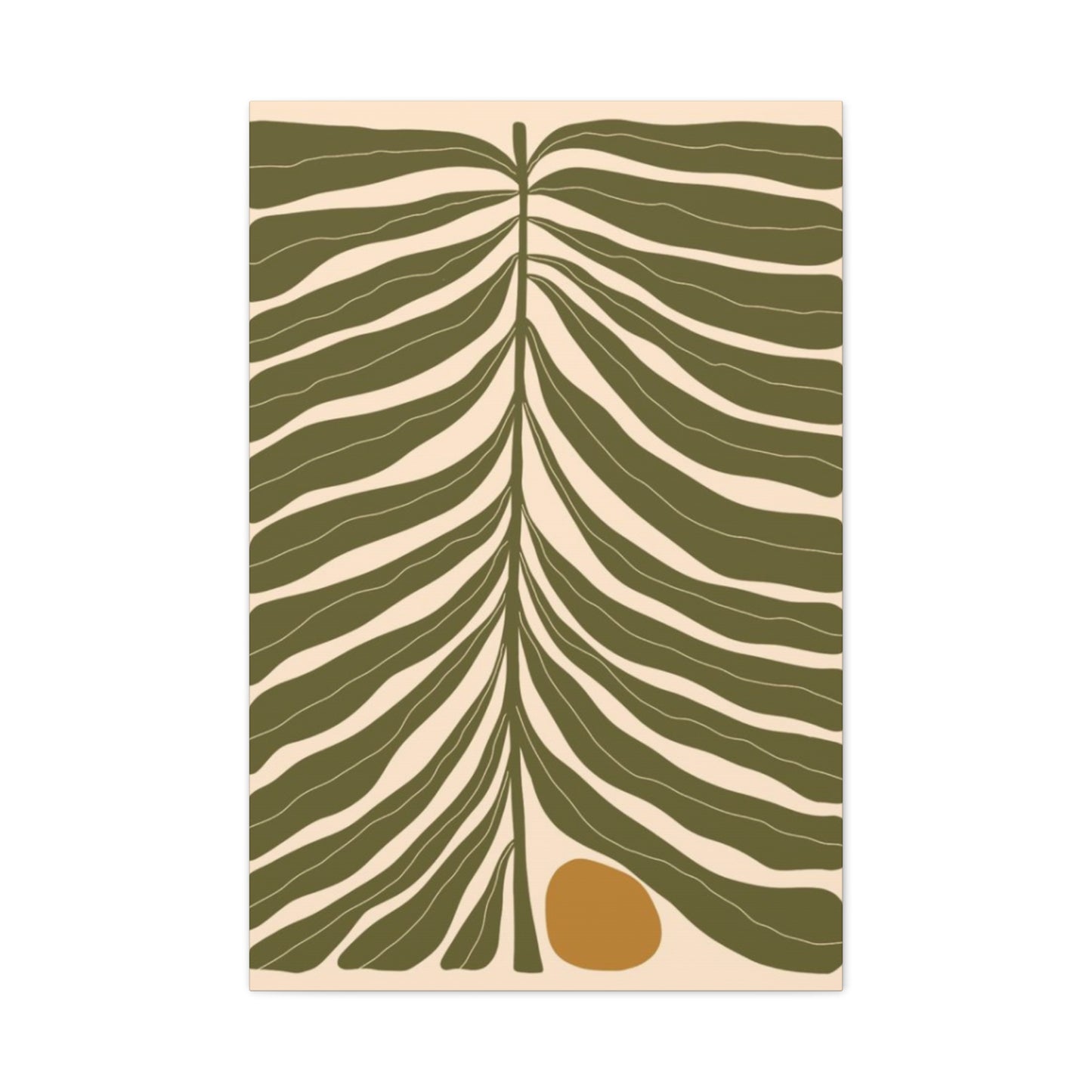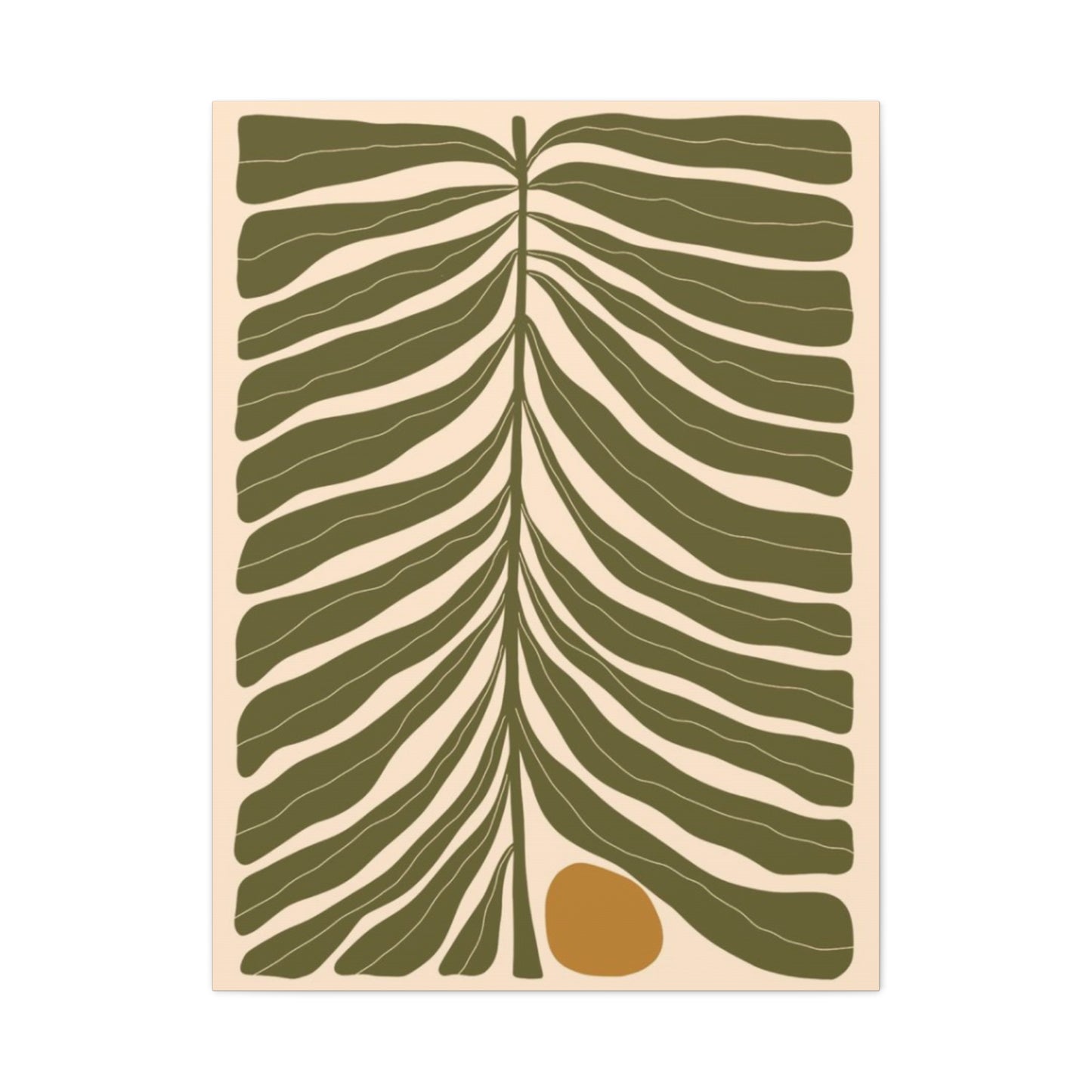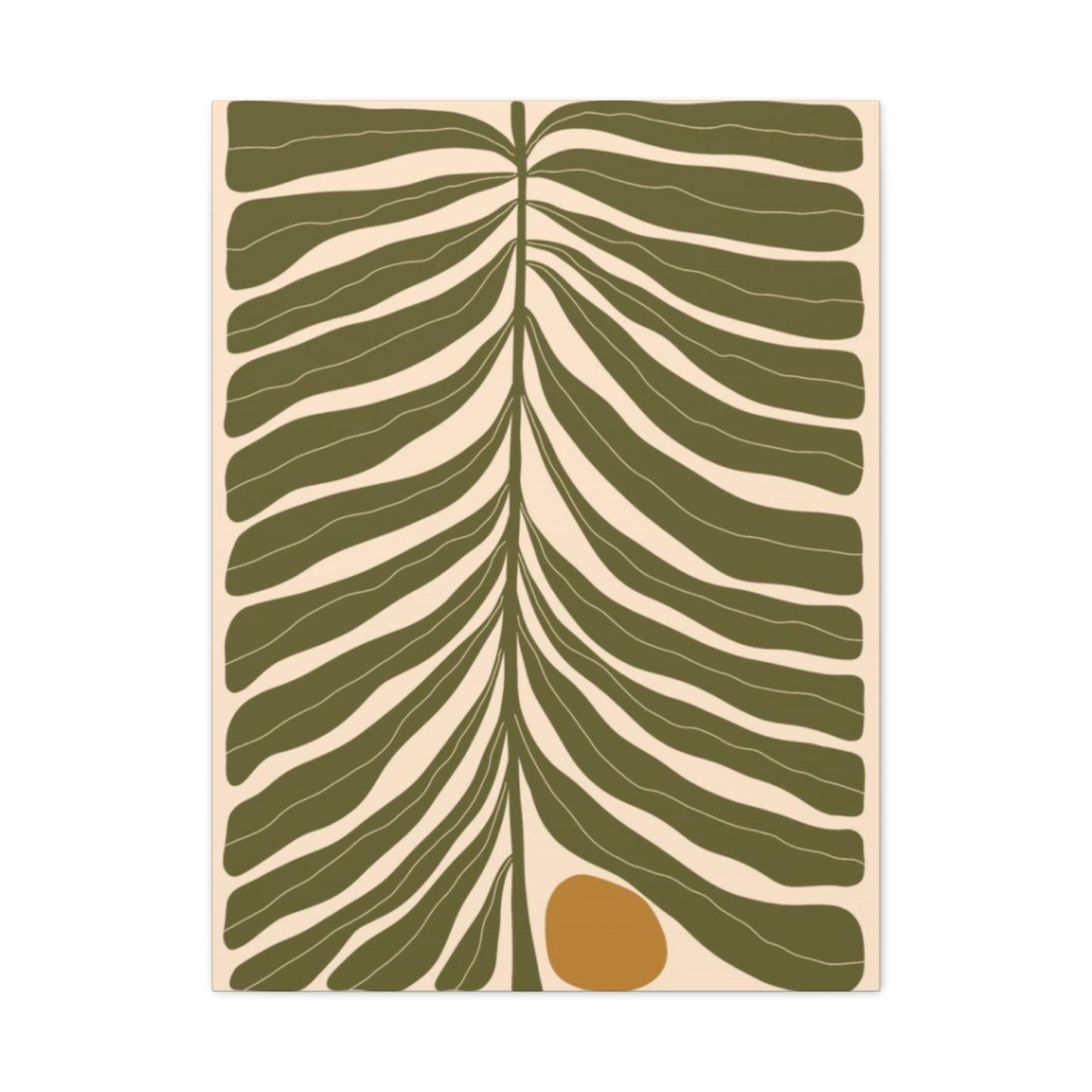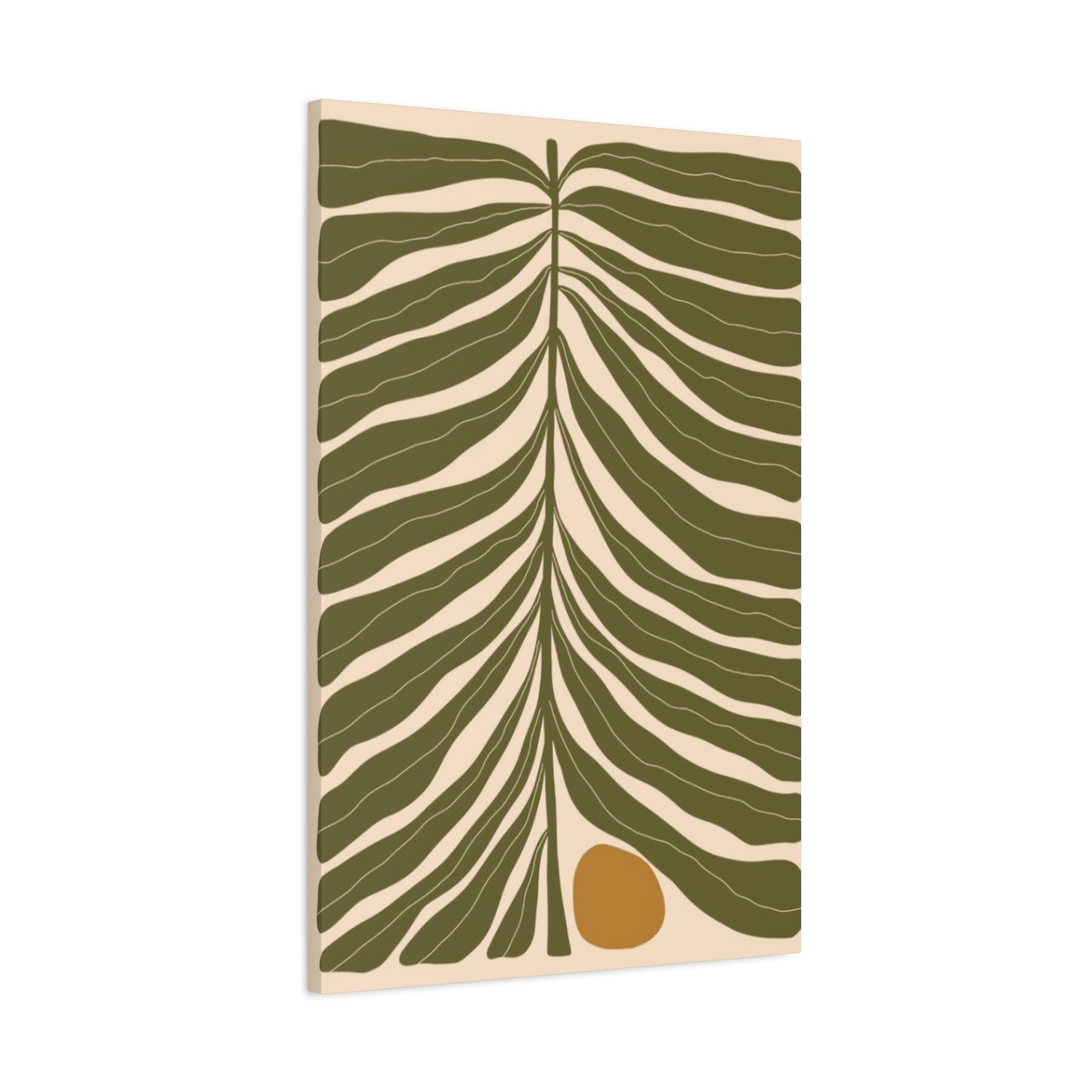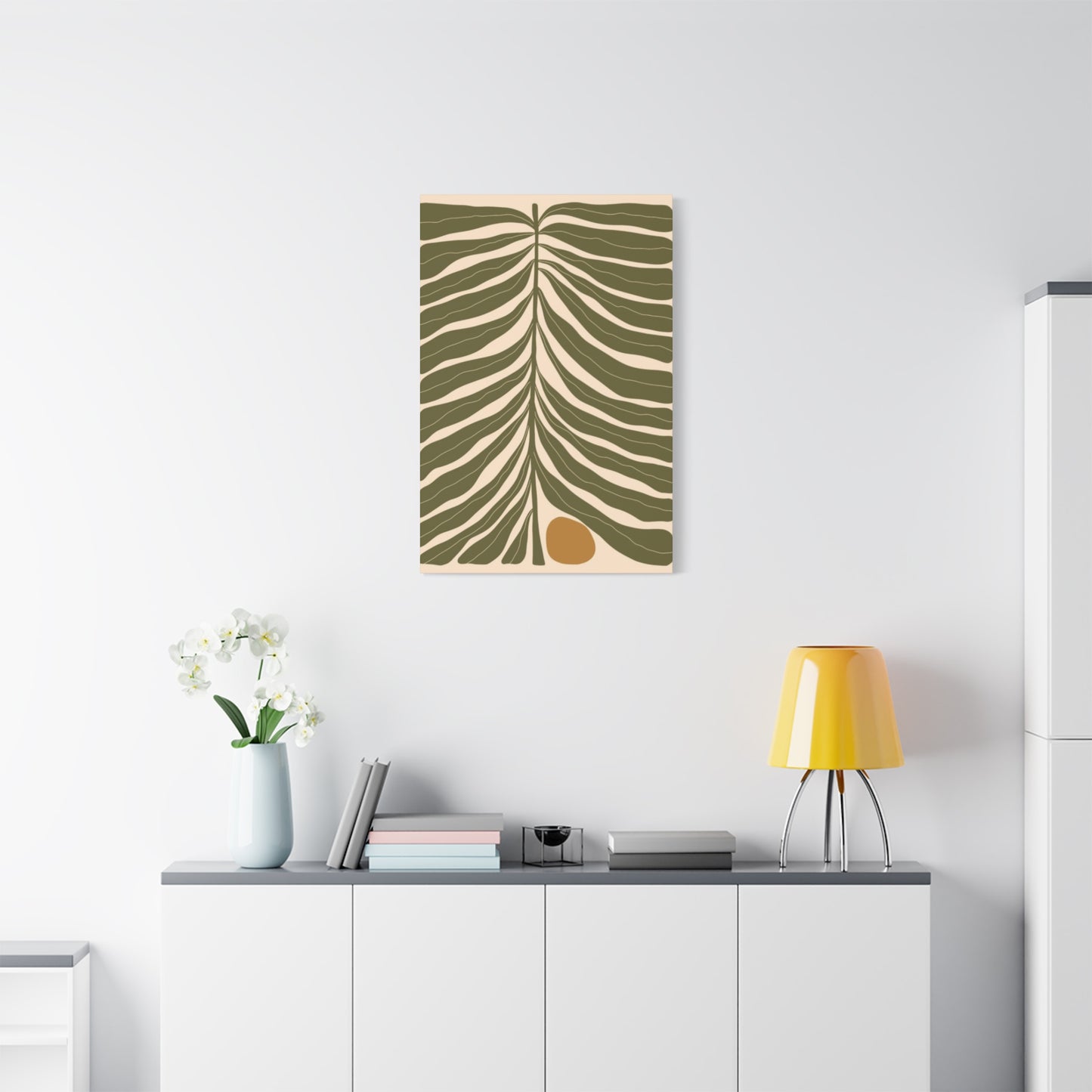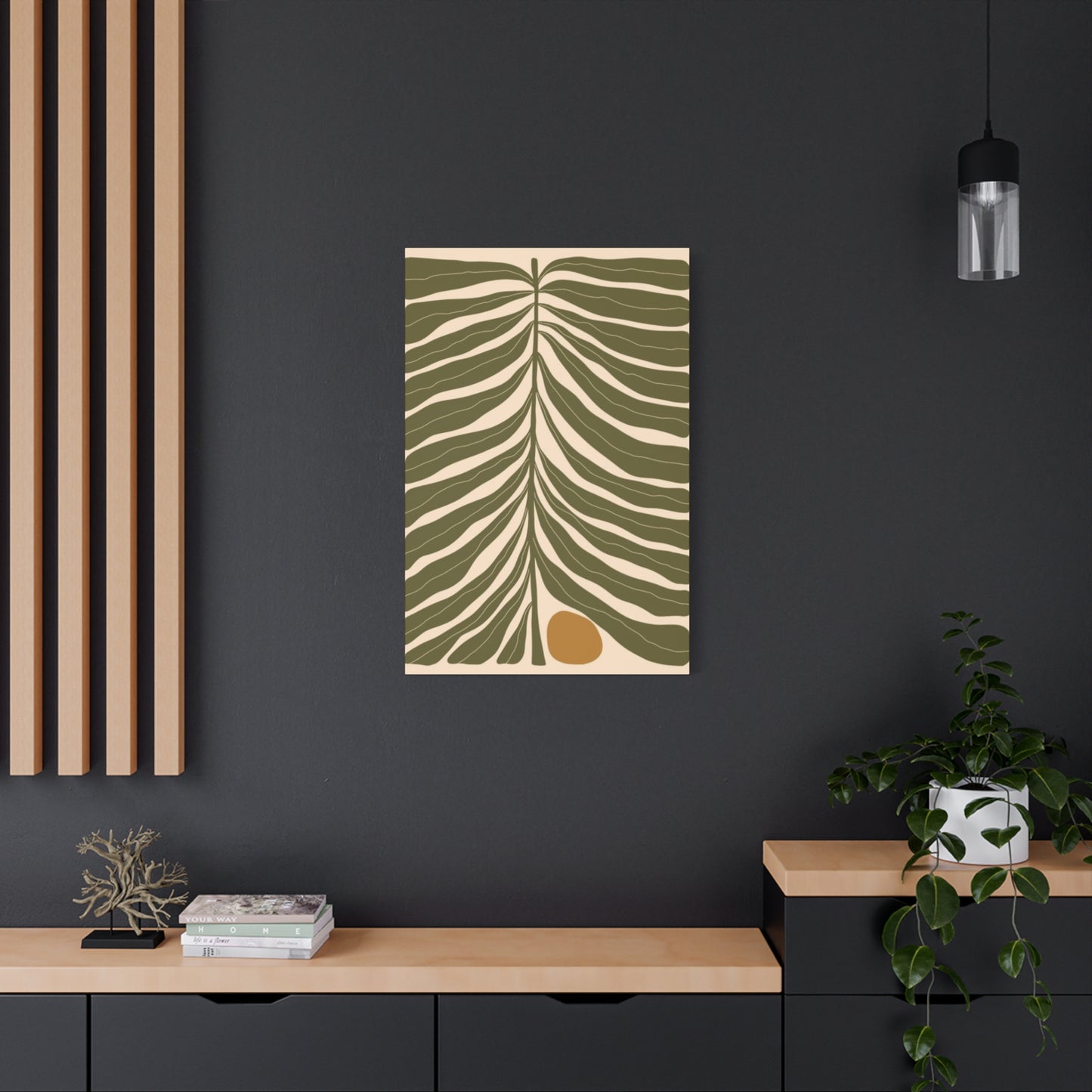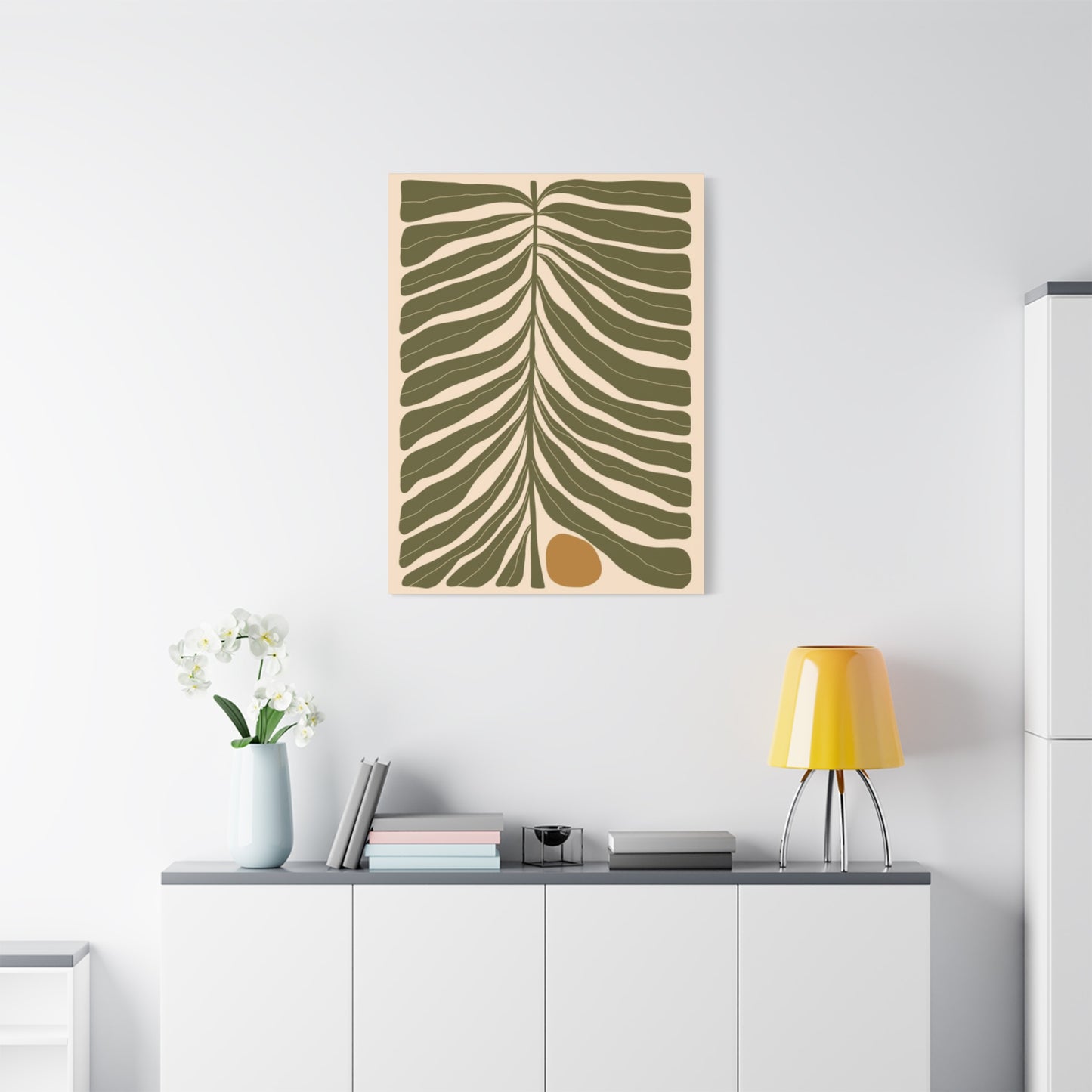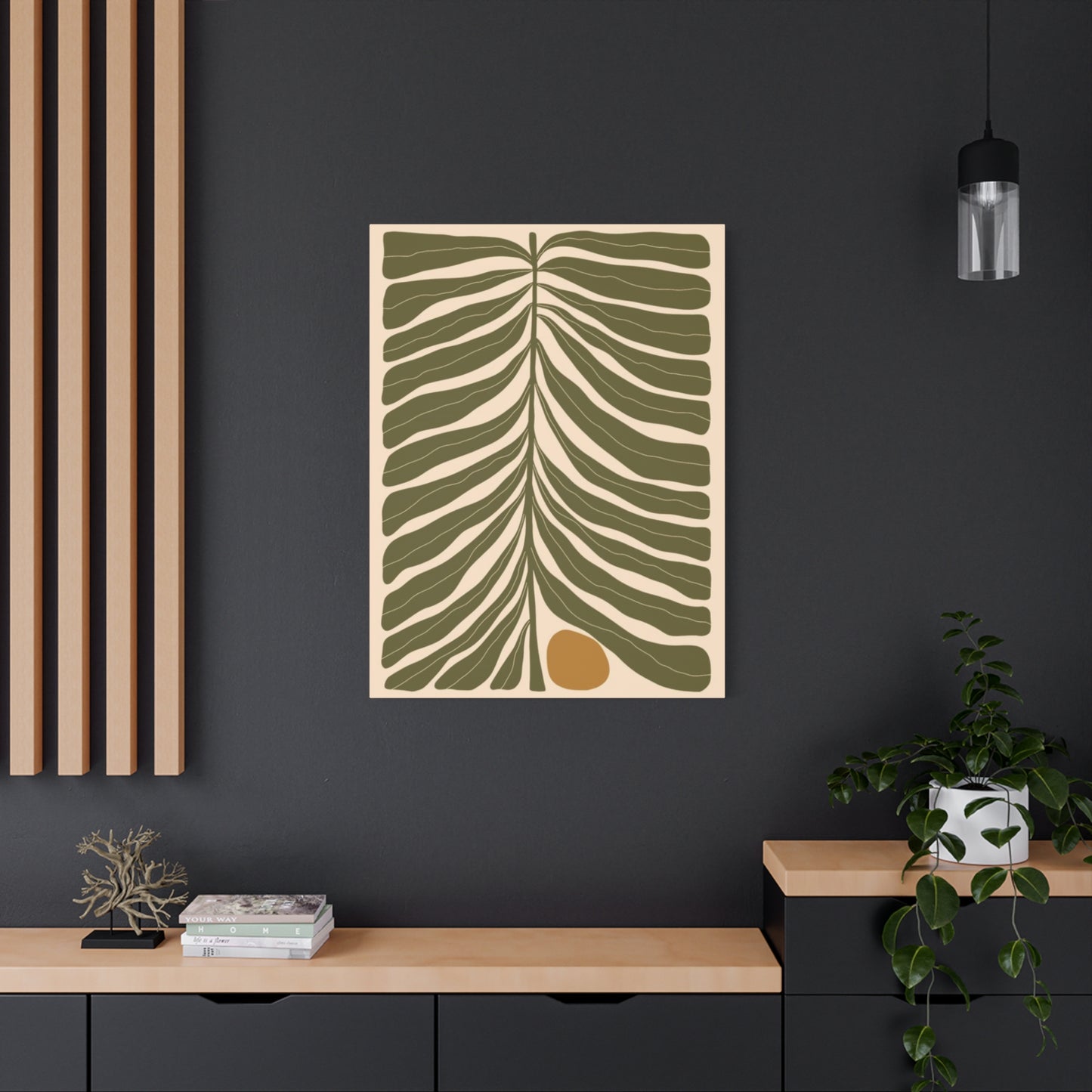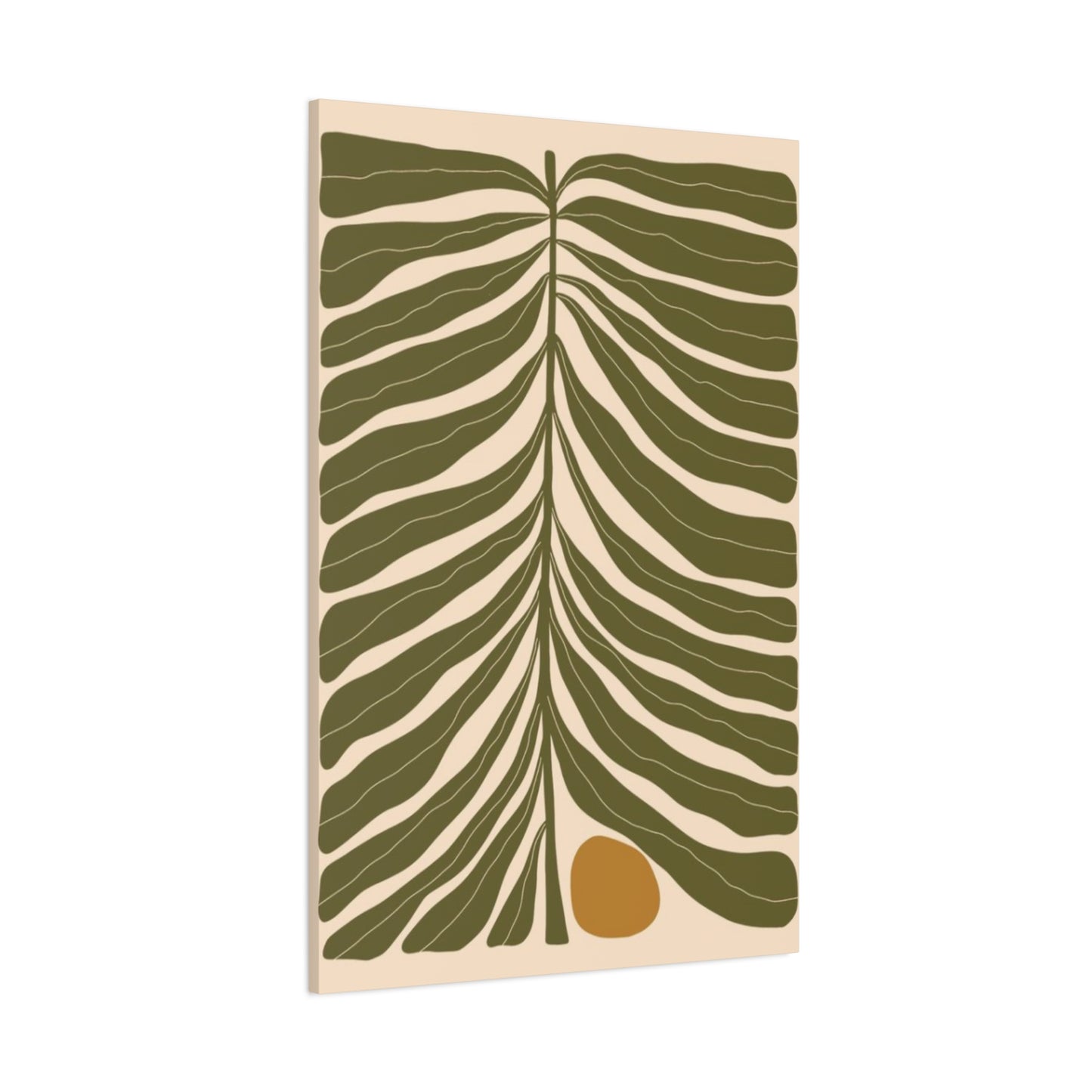An In-Depth Exploration of Olive Green Leaves Pattern Wall Art for a Serene Home
In the vast and ever-evolving world of interior design, certain elements possess a timeless quality, an enduring ability to resonate with our innate desire for peace, balance, and connection to the natural world. Among these, the motif of foliage, rendered in the soothing and sophisticated hue of olive green, stands out as a particularly powerful choice for home decor. The fusion of this specific color with the organic elegance of leaf patterns creates a visual language that speaks of tranquility, growth, and understated luxury. This exploration delves deep into the multifaceted world of olive-green-leaves-pattern-wall-art, examining its psychological impact, its versatility across various design aesthetics, and the practical ways to integrate it into a home to cultivate an atmosphere of serene beauty. From the subtle charm of a single framed print to the immersive impact of a full accent wall, this art form offers a unique opportunity to bridge the gap between our indoor sanctuaries and the calming essence of the great outdoors, transforming a simple wall into a canvas of natural harmony.
Olive Green in Interior Design
The color olive green holds a unique and cherished place within the interior design palette, consistently remaining a favored choice for designers and homeowners seeking to create spaces that are both sophisticated and deeply comforting. Its appeal is not rooted in fleeting trends but in its profound connection to the natural world. Olive green is the color of sun-drenched groves, of resilient leaves, and of the quiet stillness of a forest floor. This inherent association with nature allows it to bring a sense of organic tranquility into any room. Unlike brighter, more stimulating greens, olive possesses a muted, earthy quality, containing subtle undertones of yellow and brown that ground it and give it a remarkable depth. This complexity is key to its versatility. It can act as a commanding feature color without overwhelming a space, or it can serve as a nuanced neutral, providing a rich backdrop that complements a wide array of other hues and materials.
Deconstructing the Psychology of the Color Olive Green
Delving into the psychology of color reveals why certain hues have such a profound effect on our mood and perception. Olive green, in particular, carries a complex and largely positive psychological weight. At its core, as a shade of green, it is intrinsically linked to the concepts of nature, growth, and vitality. Our brains are hardwired to associate green with life-sustaining environments, which is why it often triggers feelings of safety, harmony, and restoration. However, the specific shade of olive introduces additional layers of meaning. The slight desaturation and earthy undertones temper the vibrancy of a purer green, steering the psychological response away from high energy and towards a state of calm contemplation. It is often perceived as a color of peace and wisdom, a nod to the symbolism of the olive branch itself. This shade can foster a sense of concentration and quiet strength, making it an excellent choice for spaces intended for relaxation or focus, such as a study, library, or bedroom. By choosing olive-green-leaves-pattern-wall-art, one is not merely selecting a decorative item but is actively curating an emotional atmosphere.
How Olive Green Evokes a Sense of Calm and Stability
The ability of olive green to evoke a profound sense of calm and stability is one of its most celebrated attributes in the realm of decor. This effect is achieved through its unique position on the color spectrum and its strong ties to the natural world. Visually, olive green is a restful color for the human eye to perceive; it sits near the center of the visible spectrum, meaning our eyes require very little adjustment to see it, which reduces physical strain and promotes a feeling of ease. This lack of visual "noise" translates directly into a calmer mental state. Furthermore, its earthy composition connects us to the concept of the ground beneath our feet, a powerful symbol of stability and resilience. In a world filled with digital screens and artificial environments, introducing elements like olive-green-leaves-pattern-wall-art acts as a vital counterbalance. It provides a visual anchor that is both organic and unchanging. The gentle repetition of leaf patterns within this calming hue reinforces this effect, creating a predictable and rhythmic visual flow that is inherently soothing.
Exploring the Spectrum: From Muted Sage to Deep Olive
While we often speak of "olive green" as a single color, it actually represents a rich and varied spectrum of shades, each with its own distinct personality and impact on a space. Understanding this range is crucial when selecting the perfect olive-green-leaves-pattern-wall-art for your home. At the lighter end of the spectrum, we find hues that border on sage and khaki. These colors are airy, soft, and have a higher proportion of gray or beige undertones, lending them a gentle, minimalist feel. A wall art piece featuring a pattern in muted sage-olive can create a subtle, calming effect, perfect for Scandinavian or coastal-inspired interiors. As we move towards the middle of the spectrum, we encounter the classic olive green, a balanced and earthy tone that feels both warm and sophisticated. This is the most versatile shade, capable of anchoring a room without making it feel dark. Further along, we enter the territory of deep, dark olive. These shades are rich, dramatic, and luxurious, with strong brown or even black undertones.
The Natural Connection: Olive Green as an Earth Tone
Olive green is fundamentally an earth tone, a color drawn directly from the palette of the natural landscape. This classification is key to understanding its appeal and its seamless ability to integrate into our living spaces. Earth tones are colors derived from natural elements like soil, rock, and vegetation. This category includes shades of brown, beige, terracotta, and, of course, muted greens like olive. The inherent strength of these colors is their ability to create a sense of groundedness and stability. They connect our modern, often sterile, indoor environments to the primal comfort of the natural world. Olive green, specifically, captures the essence of foliage and plant life, but in a more subdued and timeless way than a bright kelly or lime green. It represents the enduring, resilient aspects of nature rather than the fleeting vibrancy of spring. When you incorporate olive-green-leaves-pattern-wall-art into your home, you are doing more than just adding a decorative element; you are introducing a piece of this foundational, earthy stability.
Creating Dynamic Palettes: Olive Green with Bold Accent Colors
While olive green pairs beautifully with neutrals, its true dynamic potential is unlocked when it is thoughtfully combined with bold accent colors. Its muted, earthy base provides the perfect stable foundation for brighter, more saturated hues to shine without becoming overwhelming. For a touch of warmth and energy, pairing olive green with colors like ochre, mustard yellow, or burnt orange is a classic choice. This combination is reminiscent of an autumnal landscape and creates a cozy, inviting, and slightly retro vibe. The warmth of the yellow or orange energizes the calm of the olive, resulting in a perfectly balanced and visually engaging palette. For a more unexpected and sophisticated look, consider pairing olive green with dusty pinks, deep burgundies, or rich terracotta. The subtle red undertones in these colors are complementary to green on the color wheel, creating a palette that is both harmonious and full of depth. This combination can feel both romantic and grounded. For a truly bold and luxurious statement, accents of deep navy blue or even a rich teal can be used alongside olive green. This creates a layered, jewel-toned effect that is incredibly chic and contemporary.
The Versatility of Olive Green Across Different Design Aesthetics
The remarkable versatility of olive green is a testament to its status as a timeless and adaptable color. It is not confined to a single design style but can be seamlessly integrated into a vast array of aesthetics, from the rustic to the ultra-modern. In a farmhouse or rustic setting, olive green evokes a sense of natural, lived-in comfort. An olive-green-leaves-pattern-wall-art piece in this context would pair perfectly with natural wood tones, distressed finishes, and cozy textiles like linen and wool. For a Scandinavian or minimalist interior, a simple, stylized leaf pattern in a muted olive shade can provide a necessary touch of organic color and warmth without disrupting the clean lines and clutter-free ethos of the space. In a bohemian or eclectic home, olive green serves as a grounding earth tone that can tie together a vibrant mix of patterns, textures, and colors from around the world. It provides a calming backdrop for more exuberant decorative elements. Even in a sleek, contemporary or industrial design, olive green can be used to soften hard edges and introduce a biophilic element. A large, abstract leaf pattern on a metal or acrylic print can add a layer of organic sophistication to a space defined by concrete, glass, and metal.
Olive Green's Role in Creating Sophisticated and Timeless Spaces
Beyond its connection to nature and its calming properties, olive green plays a crucial role in creating spaces that feel sophisticated, mature, and timeless. Unlike trend-driven colors that can quickly feel dated, olive has a classic, enduring quality that lends an air of quiet confidence and understated luxury to a room. Its complexity—the subtle blend of green, yellow, and brown—gives it a depth that simpler colors lack. This depth creates visual interest and prevents the color from feeling flat or one-dimensional. When used in the form of olive-green-leaves-pattern-wall-art, it elevates the decor from merely decorative to truly artistic. The organic nature of the leaf patterns combined with the sophisticated hue feels intentional and curated. This combination suggests a thoughtful approach to design, one that values lasting beauty over fleeting fads. Olive green also pairs exceptionally well with materials associated with luxury and longevity, such as brass, marble, dark wood, and velvet. An olive green art piece accented with a brass frame, for example, immediately signals a high-end, classic aesthetic.
The Intricate Beauty of Botanical Illustrations in Art
Botanical illustrations have captivated artists and admirers for centuries, representing a perfect marriage of scientific observation and artistic expression. The intricate beauty found in this art form lies in its meticulous attention to detail. Historically, these illustrations were created not just for aesthetic pleasure but for the scientific documentation of plant species. This purpose demanded an incredible level of precision, with artists painstakingly rendering every vein on a leaf, every delicate petal, and the subtle variations in color and texture. This heritage of precision and accuracy is what gives botanical art its enduring power. When this style is applied to olive-green-leaves-pattern-wall-art, it brings a level of sophistication and intellectual curiosity to the piece. The viewer is invited to look closer, to appreciate the complex structure and delicate form of each individual leaf. This is not just a pattern; it is a study of nature's design. The use of fine lines, subtle shading, and accurate proportions creates a sense of realism and wonder. Whether the style is a classic, vintage-inspired botanical plate or a modern interpretation with a clean background, the focus on intricate detail elevates the artwork, making it a captivating focal point that celebrates the quiet, complex beauty of the natural world.
Symbolism of Leaves: Growth, Renewal, and Nature's Cycle
Leaves are far more than just a decorative motif; they are powerful symbols imbued with deep and universal meaning. Across countless cultures and throughout human history, leaves have represented the fundamental concepts of growth, renewal, and the cyclical nature of life. Each spring, the emergence of new leaves symbolizes a fresh start, hope, and the triumphant return of life after the dormancy of winter. This makes leaf patterns in home decor an inherently optimistic and life-affirming choice. They serve as a constant, gentle reminder of the potential for growth and change. The life cycle of a leaf—from a bud to a vibrant green blade, to the rich colors of autumn, and its eventual return to the earth—mirrors our own life's journey and the natural rhythms of existence. Incorporating olive-green-leaves-pattern-wall-art into a living space taps into this profound symbolism. The green color reinforces the themes of vitality and health, while the olive tone specifically adds a layer of endurance and maturity. It is a visual representation of a stable, enduring form of growth.
A Focus on Olive Branch Patterns: Peace and Heritage
Among the vast array of leaf patterns, the olive branch holds a uniquely significant and revered status. Its symbolism is ancient and deeply ingrained in Western culture, primarily representing peace, reconciliation, and victory. This association dates back to ancient Greek mythology, where the olive tree was a gift from the goddess Athena, and a dove returning to Noah's ark with an olive branch signaled the end of the great flood. Because of this powerful heritage, an olive-green-leaves-pattern-wall-art piece that specifically features olive branches carries with it an added layer of meaning and gravitas. The slender, silvery-green leaves and delicate structure of the branch create a pattern that is both elegant and understated. It is a design that doesn't shout for attention but rather conveys a sense of quiet dignity and grace. Choosing an olive branch pattern for your home is a way to make a subtle statement about the values you wish to cultivate within that space—harmony, tranquility, and a connection to a rich historical tradition. It is a motif that feels both classic and eternally relevant, capable of bringing a sense of profound calm and sophisticated heritage to any room it adorns.
The Popularity of Eucalyptus Leaf Patterns in Modern Decor
In recent years, the eucalyptus leaf has surged in popularity, becoming a dominant motif in modern interior design and for good reason. Its distinctive form, characterized by long, slender, or rounded coin-shaped leaves, offers a fresh and contemporary alternative to more traditional foliage. The leaves often have a silvery-green or blue-green cast, which translates beautifully into the cooler, more muted end of the olive green spectrum. This color profile makes eucalyptus patterns particularly well-suited for modern, Scandinavian, and minimalist aesthetics. The visual appeal of eucalyptus lies in its elegant, slightly drooping form, which creates a sense of graceful movement and organic flow. Unlike denser leaf patterns, eucalyptus arrangements often feel airy and light, allowing for negative space that keeps the design from feeling cluttered. An olive-green-leaves-pattern-wall-art piece featuring eucalyptus can bring a touch of the trendy "modern botanical" look into a home. It feels calming and spa-like, evoking the clean, refreshing scent associated with the plant itself. This combination of a modern silhouette, a soothing color palette, and a connection to wellness and relaxation explains why the eucalyptus pattern has become a firm favorite for those looking to create a chic and serene contemporary space.
Exploring Fern and Frond Motifs for a Lush Ambiance
For those seeking to create a truly lush, verdant, and immersive atmosphere, fern and frond motifs are an exceptional choice. The intricate, fractal-like structure of a fern frond is a marvel of natural design, with its delicate leaflets branching off in a complex yet orderly pattern. This complexity makes for a visually fascinating and deeply engaging piece of wall art. When rendered in shades of olive green, fern patterns can evoke the feeling of a shaded, tranquil forest floor or a humid, tropical greenhouse. They bring a powerful sense of the wild, untamed aspects of nature indoors. Unlike the simple shape of a single leaf, a frond is a complete ecosystem in miniature, and this richness translates into the artwork. An olive-green-leaves-pattern-wall-art piece featuring ferns can add a significant layer of texture and depth to a room. It pairs particularly well with bohemian, eclectic, or even Victorian-inspired decor, where a touch of natural opulence is desired. The sense of enclosure and protection offered by the arching shape of the fronds can make a large room feel cozier or turn a small nook into a secret garden-like escape, creating a space that feels both alive and deeply restful.
The Bold Statement of Monstera and Philodendron Leaf Art
In stark contrast to the delicate nature of ferns or eucalyptus, the leaves of the Monstera Deliciosa and various Philodendron species make a bold, graphic, and unmistakably modern statement. The iconic, split-leaf shape of the Monstera has become a symbol of contemporary botanical style, beloved for its dramatic and sculptural form. These large, glossy leaves create patterns that are impactful and full of personality. When featured in olive-green-leaves-pattern-wall-art, the scale and unique shape of these leaves command attention, instantly creating a dynamic focal point in any room. This type of art is perfect for those who want to embrace the nature theme in a confident and stylish way. It works exceptionally well in mid-century modern interiors, where organic forms are celebrated, as well as in tropical or "jungalow" aesthetics. The pattern can range from a single, oversized Monstera leaf as a minimalist statement to a dense, overlapping jungle of various philodendron shapes for a maximalist effect. The olive green color grounds the otherwise exotic feel of these tropical leaves, making them more adaptable to a wider range of home environments. This is art that doesn't just blend in; it brings a vibrant burst of stylized nature and artistic energy to the wall.
Delicate and Whispy: Willow and Birch Leaf Designs
For a softer, more ethereal approach to botanical art, the delicate and wispy leaves of trees like the willow and birch offer a beautiful alternative. Willow leaves are known for their long, slender shape and their graceful, weeping habit, which translates into patterns that suggest movement, fluidity, and tranquility. A pattern of cascading willow leaves in a soft olive green can create a profoundly calming and almost poetic visual effect, reminiscent of a gentle breeze or the serene bank of a river. Similarly, the small, often heart-shaped or triangular leaves of the birch tree, attached to their slender branches, create a light and airy pattern. Birch leaf designs can evoke the feeling of a sun-dappled forest, bringing a sense of lightness and natural grace into a space. This type of olive-green-leaves-pattern-wall-art is ideal for creating a peaceful sanctuary, particularly in a bedroom or a quiet reading corner. The delicate nature of these patterns means they can be used on a larger scale without overwhelming the room. They provide a subtle, textured backdrop that enhances a sense of calm and connects the indoor space to the gentler, more poetic side of the natural world.
Abstract Interpretations of Leaf Shapes and Forms
Moving beyond realistic or stylized representations, abstract interpretations of leaf shapes offer a highly artistic and contemporary way to incorporate the botanical theme into your decor. Abstract art focuses on form, color, and line rather than literal depiction. In this context, an olive-green-leaves-pattern-wall-art piece might feature the essence of a leaf—its curve, its pointed tip, its network of veins—distilled into a simplified, geometric, or fluid form. The pattern could consist of overlapping shapes, gestural brushstrokes that hint at foliage, or a mosaic of color blocks in various shades of olive green. This approach allows for greater creative freedom and can be tailored to suit a very specific modern aesthetic. An abstract leaf pattern can feel more dynamic, energetic, or contemplative, depending on the artist's execution. It invites the viewer to see nature in a new light, focusing on the fundamental patterns and energies rather than the fine details. This style is perfect for minimalist, contemporary, or art-centric interiors where a unique, thought-provoking piece is desired. It allows you to embrace the calming, natural ethos of the leaf motif while maintaining a sophisticated, non-literal, and thoroughly modern design sensibility.
The Difference Between Realistic and Stylized Leaf Patterns
When choosing an olive-green-leaves-pattern-wall-art piece, it's important to understand the distinction between realistic and stylized designs, as each creates a very different mood. Realistic patterns, as seen in classic botanical illustrations, aim for lifelike accuracy. They capture the precise shape, veining, texture, and color variations of a specific leaf. This approach brings a sense of authenticity and natural wonder into the home. It feels educational and timeless, connecting the space to the scientific study and appreciation of nature. A realistic pattern can lend a traditional, classic, or scholarly air to a room. In contrast, stylized patterns take the basic form of a leaf and simplify, exaggerate, or reinterpret it for artistic effect. This could mean a leaf with a perfectly symmetrical shape, flat, uniform color, or an embellished outline. Stylized designs are often more graphic and contemporary. They focus on the decorative quality of the leaf shape rather than its biological accuracy. This approach can feel more playful, modern, or artistic, and it allows the pattern to integrate more seamlessly into a specific design scheme, such as mid-century modern or Art Deco. The choice between realistic and stylized depends on the desired atmosphere: realistic for a timeless, naturalistic feel, and stylized for a more graphic, curated, and contemporary statement.
How Pattern Density Affects the Mood of a Room
The density of the leaf pattern in your chosen wall art has a significant impact on the overall mood and perception of the space. A sparse or low-density pattern, featuring a few well-spaced leaves or branches against a clean background, creates a sense of calm, openness, and simplicity. This approach is aligned with minimalist and Scandinavian design principles, where "less is more." The negative space around the elements is just as important as the elements themselves, allowing the artwork and the room to breathe. A sparse olive-green-leaves-pattern is restful for the eye and can make a small room feel larger and less cluttered. It is subtle and sophisticated. On the other hand, a dense or high-density pattern, where leaves are tightly packed, overlapping, and fill most of the canvas, creates a very different effect. This can feel lush, immersive, and energetic. A dense pattern can create a cozy, enveloping "jungle" or "forest" feeling, perfect for making a bold statement on an accent wall. This approach is often seen in bohemian, maximalist, or tropical-themed decor. While it can make a small room feel busier, in a larger space it can add warmth, texture, and a dramatic sense of depth. The choice of density should therefore be a conscious one, directly related to the energy and spatial feeling you wish to cultivate in the room.
The Role of Veins and Texture in Leaf Pattern Art
Within the design of a leaf pattern, the depiction of veins and texture plays a subtle but crucial role in determining the artwork's character and impact. Veins are the lifeblood of a leaf, and their inclusion in a pattern adds a layer of realism, complexity, and delicate detail. A design that meticulously renders the intricate network of veins, from the central midrib to the tiniest capillaries, draws the viewer in for a closer look. It speaks to the beautiful, functional design of nature and adds a sense of organic structure to the artwork. This level of detail can make an olive-green-leaves-pattern-wall-art piece feel more sophisticated and true-to-life. Beyond veins, the suggestion of texture—whether it's the waxy sheen of a magnolia leaf, the fuzzy surface of a sage leaf, or the papery feel of a dried leaf—can add another dimension of sensory experience. Even in a two-dimensional print, artistic techniques like shading, stippling, and fine line work can create the illusion of texture. This visual texture adds depth and prevents the pattern from feeling flat. It can make the artwork feel more tangible and alive, enhancing the connection to the natural object it represents and making the overall piece more visually interesting and engaging.
Classic Elegance: Olive Green Leaf Patterns on Canvas Prints
Canvas is one of the most popular and classic mediums for wall art, and for good reason. When an olive-green-leaves-pattern is printed on canvas, it takes on a textural, artistic quality that feels both timeless and substantial. The slightly textured surface of the woven canvas material diffuses light gently, which can soften the overall image and reduce glare, giving the artwork a more painterly and organic feel. This is particularly effective for botanical subjects, as the canvas texture complements the natural theme. Canvas prints are versatile and can be presented in two main ways: stretched over a wooden frame (a gallery wrap) or placed within a floating frame. A gallery wrap, where the image extends around the edges of the frame, offers a clean, modern, and borderless look that allows the leaf pattern to be the sole focus. This style is seamless and works well in contemporary spaces. Alternatively, adding a floater frame—which leaves a small gap between the canvas and the frame—can add a sense of definition, polish, and sophistication. A simple black, white, or natural wood floater frame can elevate the canvas print, making it feel more like a high-end piece of gallery art. The classic elegance of canvas provides a durable and beautiful foundation for showcasing the serene beauty of olive green foliage.
The Sophistication of Framed Botanical Art
Placing an olive-green-leaves-pattern print behind glass within a traditional frame adds an immediate layer of sophistication and protection. Framing an art piece separates it from the wall, defining it as a deliberate and important decorative element. The glass or acrylic front protects the print from dust, moisture, and UV damage, ensuring its longevity and preserving the vibrancy of the olive green tones. Furthermore, the inclusion of a mat—the paperboard border between the print and the frame—can significantly enhance the artwork's presentation. A crisp white or off-white mat provides breathing room around the leaf pattern, preventing it from feeling cramped. This negative space draws the viewer's eye inward, focusing attention on the intricate details of the botanical design. The mat also adds a sense of scale and importance to the piece, making even a small print feel more substantial. Framed botanical art carries a sense of scholarly, classic elegance, reminiscent of vintage prints found in libraries or natural history museums. This presentation method is exceptionally versatile, fitting seamlessly into traditional, transitional, and even modern decor schemes, and it signals a thoughtful, curated approach to decorating a space.
Choosing the Right Frame: Wood, Metal, and Modern Finishes
The frame is not merely a border for your artwork; it is an integral part of its overall presentation and a key element in tying it to your room's decor. The choice of frame material and finish can dramatically alter the mood of your olive-green-leaves-pattern-wall-art. Natural wood frames, in finishes like oak, walnut, or maple, enhance the organic, earthy feel of the botanical print. A light oak frame complements a Scandinavian or coastal style, while a dark walnut frame adds a touch of mid-century modern or traditional gravitas. For a more rustic or farmhouse look, a distressed or reclaimed wood frame can add character and warmth. Metal frames offer a sleeker, more contemporary alternative. A thin black or charcoal metal frame provides a crisp, graphic border that makes the olive green colors pop, perfect for a modern or industrial aesthetic. Metallic finishes like gold, brass, or champagne add a touch of glamour and luxury. The warmth of a brass frame paired with the earthy olive green is a particularly sophisticated and on-trend combination. Modern finishes also include simple, minimalist frames in white or black, which allow the artwork itself to be the hero without distraction. The right frame choice is a crucial final touch that should harmonize with both the artwork and the surrounding environment.
The Textural Appeal of Fabric Wall Hangings and Tapestries
For those looking to add not just color and pattern but also softness and texture to their walls, fabric wall hangings and tapestries are an excellent choice. An olive-green-leaves-pattern printed or woven onto fabric like cotton, linen, or a soft polyester blend brings a unique tactile quality to the decor. Unlike a hard, flat print, a fabric hanging has a gentle drape and a tangible texture that can make a room feel cozier, warmer, and more inviting. This medium is particularly well-suited for bohemian, eclectic, and Scandinavian interiors, where the layering of natural textures is a key design principle. Tapestries can absorb sound, which can help to soften acoustics in a room with hard floors and high ceilings, contributing to a more serene and peaceful atmosphere. They offer a more casual and relaxed alternative to formal framed art. A large-scale fabric hanging can cover a significant portion of a wall, creating an immersive, mural-like effect that is both impactful and soft. The slight movement of the fabric in a breeze can also add a subtle, dynamic element to the room, enhancing the feeling of a living, breathing space.
Modern and Sleek: Metal Wall Art with Leaf Motifs
For a truly modern, durable, and high-impact statement, consider olive-green-leaves-pattern-wall-art created on a metal surface, such as aluminum. This medium offers a sleek, clean, and contemporary aesthetic that is unmatched by traditional materials. The image is often infused directly into the metal's surface, resulting in incredible color vibrancy and depth. The olive green tones will appear rich and luminous, with a subtle gloss that catches the light beautifully. Metal prints are frameless, giving them a minimalist, "floating" appearance on the wall that is perfect for contemporary and industrial design schemes. They are also incredibly durable, resistant to moisture, scratching, and fading, making them an ideal choice for high-traffic areas, kitchens, or even covered outdoor spaces. Another form of metal art involves laser-cut designs, where leaf shapes are cut out of a sheet of metal, which is then powder-coated in an olive green finish. This creates a three-dimensional piece that plays with light and shadow, casting interesting patterns on the wall behind it. This type of sculptural art adds both color and form to the space, serving as a modern and sophisticated focal point.
Rustic Charm: Carved Wood Panels with Olive Leaf Designs
To fully embrace a natural, rustic, or farmhouse aesthetic, a carved wood panel featuring an olive leaf design is an exceptional choice. This form of wall art moves beyond a simple two-dimensional pattern and into the realm of sculpture and craft. The leaf motifs are carved directly into the surface of the wood, creating a piece with tangible depth, texture, and artisanal charm. The natural grain and knots of the wood become part of the artwork, adding a unique, one-of-a-kind character to each panel. The olive leaf design can be left in its natural wood tone, or it can be subtly stained or painted with olive green hues to enhance the theme. The interplay between the color and the natural wood creates a beautiful, earthy harmony. A carved wood panel feels substantial and authentic, connecting the home to traditions of craftsmanship and natural materials. It can serve as a stunning focal point above a fireplace, a bed, or a console table, bringing a powerful sense of rustic elegance and handcrafted beauty to the space. This is a perfect option for those who value texture, natural materials, and the timeless appeal of artisanal decor.
Removable Solutions: The Flexibility of Wall Decals and Stickers
For those who rent their homes, love to change their decor frequently, or are hesitant to commit to a permanent art installation, removable wall decals and stickers offer a fantastic and flexible solution. Modern wall decals are a world away from the simple stickers of the past. They are now available in sophisticated and intricate olive-green-leaves-patterns, often with a high-quality matte finish that mimics the look of a painted mural. Decals can range from a set of individual leaves that you can arrange in your own custom pattern to a large, single design that acts as a focal point. The application process is typically straightforward, and most importantly, they can be removed easily without damaging the paint or walls underneath. This allows for experimentation and creativity without long-term consequences. You can create the effect of an accent wall behind a bed, add a cascading vine pattern down a narrow hallway, or place a few subtle leaves in a forgotten corner. Wall decals provide an accessible and affordable way to embrace the olive-green-leaves-pattern trend, offering maximum decorative impact with minimum commitment.
Creating an Immersive Experience with Leaf Pattern Wallpaper
For the most dramatic and immersive expression of the botanical theme, nothing compares to wallpaper. An accent wall covered in an olive-green-leaves-pattern wallpaper can completely transform a room, creating a powerful and cohesive design statement. Unlike a single piece of art, wallpaper envelops the space, turning the entire wall into a canvas of natural beauty. This can create a wonderfully cozy and cocooning effect in a bedroom or a den, or a stunning, high-impact feature in a living room or entryway. Modern wallpaper comes in a vast array of styles, from large-scale, realistic botanical prints that feel like a mural, to small, repetitive, stylized patterns that offer a more subtle texture. The olive green color, when spread across a large surface, establishes a dominant mood of tranquility and sophistication. For those concerned about commitment, peel-and-stick wallpaper options are now widely available, offering the same immersive experience as traditional wallpaper but with the added benefit of being removable. This makes it a viable option even for renters or those who enjoy updating their interiors. Using wallpaper is the ultimate way to fully commit to the theme and create a truly unique and personalized space.
The Unique Beauty of Acrylic and Glass Prints
For a presentation that is luminous, modern, and exceptionally vibrant, acrylic and glass prints are an outstanding choice. In this process, the olive-green-leaves-pattern is printed on high-quality photographic paper and then face-mounted onto a polished sheet of acrylic or glass. The light passes through the acrylic, illuminating the image from behind and giving it a remarkable sense of depth and radiance. The colors, especially the rich and nuanced shades of olive green, appear incredibly saturated and brilliant. This method creates an almost three-dimensional effect, making the leaves seem as though they are floating within the glossy surface. The result is a sleek, frameless piece of art that is both sophisticated and strikingly contemporary. The hard, reflective surface is easy to clean and has a high-end, gallery-quality feel. Acrylic and glass prints are perfect for modern, minimalist, or glamorous interiors where a clean, polished look is desired. The unique way this medium interacts with light makes the botanical pattern come alive, offering a dynamic and captivating visual experience that changes subtly throughout the day as the ambient light shifts.
Exploring Multi-Panel Wall Art for a Dramatic Statement
To make a truly dramatic and impactful statement, especially on a large, empty wall, multi-panel wall art is an excellent option. This format, also known as a diptych (two panels), triptych (three panels), or polyptych (many panels), takes a single olive-green-leaves-pattern image and divides it across multiple canvases or frames. This technique achieves several things. Firstly, it allows you to cover a much larger area than a single print, making it ideal for spaces with high ceilings or long walls, such as above a sofa or along a hallway. Secondly, the physical gaps between the panels create a sense of rhythm and architectural interest, breaking up the image in a way that is visually engaging and modern. This separation draws the eye across the entire composition, encouraging the viewer to take in the full scope of the artwork. The effect can be powerful and dynamic, turning a simple botanical pattern into a large-scale installation piece. Whether it's a cascading vine that flows from one panel to the next or a magnified leaf detail that is dissected into sections, multi-panel art elevates the design from a simple decoration to a major architectural feature of the room.
The Artistic Touch of Hand-Painted Leaf Murals
For the ultimate in personalization and artistic expression, a hand-painted mural offers a one-of-a-kind solution. Commissioning an artist to paint an olive-green-leaves-pattern directly onto your wall creates a piece of art that is perfectly tailored to your specific space, scale, and vision. This is not a reproduction; it is a unique work of art that infuses the room with the artist's touch and creative energy. A mural can be designed to flow around architectural features like doorways and windows, creating a truly integrated and seamless look. The artist can use various techniques to add texture, depth, and subtle color variations that are impossible to achieve with a print. You could opt for a delicate, watercolor-style rendering of olive branches trailing across a wall, or a bold, graphic interpretation of Monstera leaves in varying shades of olive. A hand-painted mural becomes a permanent and cherished feature of the home, a testament to a love for art and a commitment to creating a deeply personal environment. It is the most immersive way to bring the beauty of the olive-green-leaves-pattern to life, turning your wall into a breathtaking, original canvas.
Creating a Tranquil Sanctuary with Olive Green Art in the Bedroom
The bedroom is our personal sanctuary, a space dedicated to rest, relaxation, and rejuvenation. It is therefore one of the most fitting places in the home to incorporate the calming influence of olive-green-leaves-pattern-wall-art. The psychological properties of olive green—its ability to reduce stress and promote a sense of stability—are perfectly aligned with the purpose of a bedroom. Hanging a large, serene piece of botanical art above the headboard can create a stunning focal point and set a peaceful tone for the entire room. A pattern featuring gentle, cascading leaves like willow or eucalyptus can enhance the feeling of a tranquil retreat. To create a cohesive look, the shades of olive green from the artwork can be echoed in other textiles, such as throw pillows, a duvet cover, or curtains. Pairing the olive green with soft, neutral bedding in shades of cream, beige, or light gray will create a soothing and harmonious color palette. The goal is to create a visual environment that is uncluttered and restful for the mind. By introducing a connection to nature through the artwork, you can transform your bedroom into a true sanctuary that encourages deep sleep and peaceful mornings.
Designing a Welcoming Living Room with Botanical Patterns
The living room is the heart of the home, a space for socializing, relaxing, and expressing personal style. Using olive-green-leaves-pattern-wall-art in this central area can establish a welcoming, sophisticated, and comfortable atmosphere. A large statement piece or a curated gallery wall of botanical prints can serve as a fantastic conversation starter and a beautiful focal point. The choice of pattern can define the room's character: a bold Monstera leaf pattern for a modern, energetic vibe, or a classic olive branch print for a more traditional and serene feel. To integrate the artwork with the rest of the decor, pull colors from the print into your accessories. If the art features deep olive and sage tones, incorporate those colors in your sofa cushions, area rug, or decorative vases. The earthy nature of olive green pairs beautifully with common living room materials like wood furniture, leather upholstery, and cozy woven fabrics. The presence of nature-inspired art can also make the space feel more alive and less formal, encouraging guests to relax and feel at home. It’s a way to bring the calming, restorative qualities of the outdoors into the very space where you spend the most time connecting with family and friends.
Conclusion:
In the intricate tapestry of interior design, where trends emerge and fade with seasonal regularity, the enduring appeal of olive-green-leaves-pattern-wall-art stands as a testament to the timeless power of nature-inspired decor. This exploration has journeyed through the myriad facets of this specific artistic choice, revealing it to be far more than a mere decorative element. It is a sophisticated tool for shaping the atmosphere of a home, a conduit for wellness, and a reflection of personal style that bridges the gap between the classic and the contemporary. The foundation of its impact lies in the profound psychology of its core components. The color olive green, with its earthy, muted tones, serves as a visual anchor, grounding our senses and evoking a deep-seated feeling of calm, stability, and quiet sophistication. It is a color that does not demand attention but rather earns it through its rich complexity and its inherent connection to the resilient, enduring aspects of the natural world.
When this profound hue is combined with the organic elegance of leaf patterns, its power is magnified. From the peaceful symbolism of the olive branch to the modern chic of the eucalyptus, and from the lush complexity of the fern to the bold graphics of the Monstera, each pattern tells a different story. These motifs tap into the universal language of biophilia, satisfying our innate human need to connect with nature. They symbolize growth, renewal, and the life-affirming cycles of the natural world, subtly infusing our living spaces with a sense of optimism and vitality. As we have seen, the successful integration of this art form is a nuanced process. It involves a thoughtful consideration of medium—from the classic texture of canvas to the sleek luminosity of acrylic—and a deliberate choice of style, whether it be the scientific precision of a botanical illustration or the expressive freedom of an abstract interpretation. The versatility of this theme allows it to harmonize with a vast spectrum of design aesthetics, bringing a touch of organic softness to a minimalist interior, a grounding element to a bohemian space, or a timeless elegance to a traditional home.
Furthermore, the principles of biophilic design provide a scientific framework for understanding why this type of art feels so good. By serving as a potent nature analogue, olive-green-leaves-pattern-wall-art actively works to reduce stress, improve cognitive function, and promote an overall sense of well-being. It transforms a home from a passive shelter into a restorative environment, an active participant in our health and happiness. The practical considerations of size, placement, and lighting are the final, crucial steps in unlocking the full potential of the artwork, ensuring it is not just present in a room, but truly integrated, balanced, and impactful. Ultimately, the choice to incorporate olive-green-leaves-pattern-wall-art is a choice to cultivate a certain quality of life. It is an intentional decision to create a sanctuary of peace in a busy world, to celebrate the intricate beauty of the natural world, and to craft a home that is not only visually pleasing but also emotionally and psychologically nurturing. It is a classic, enduring theme that will continue to enrich our homes, offering a quiet, leafy testament to the idea that true style and true well-being are deeply rooted in our connection to the earth.


















